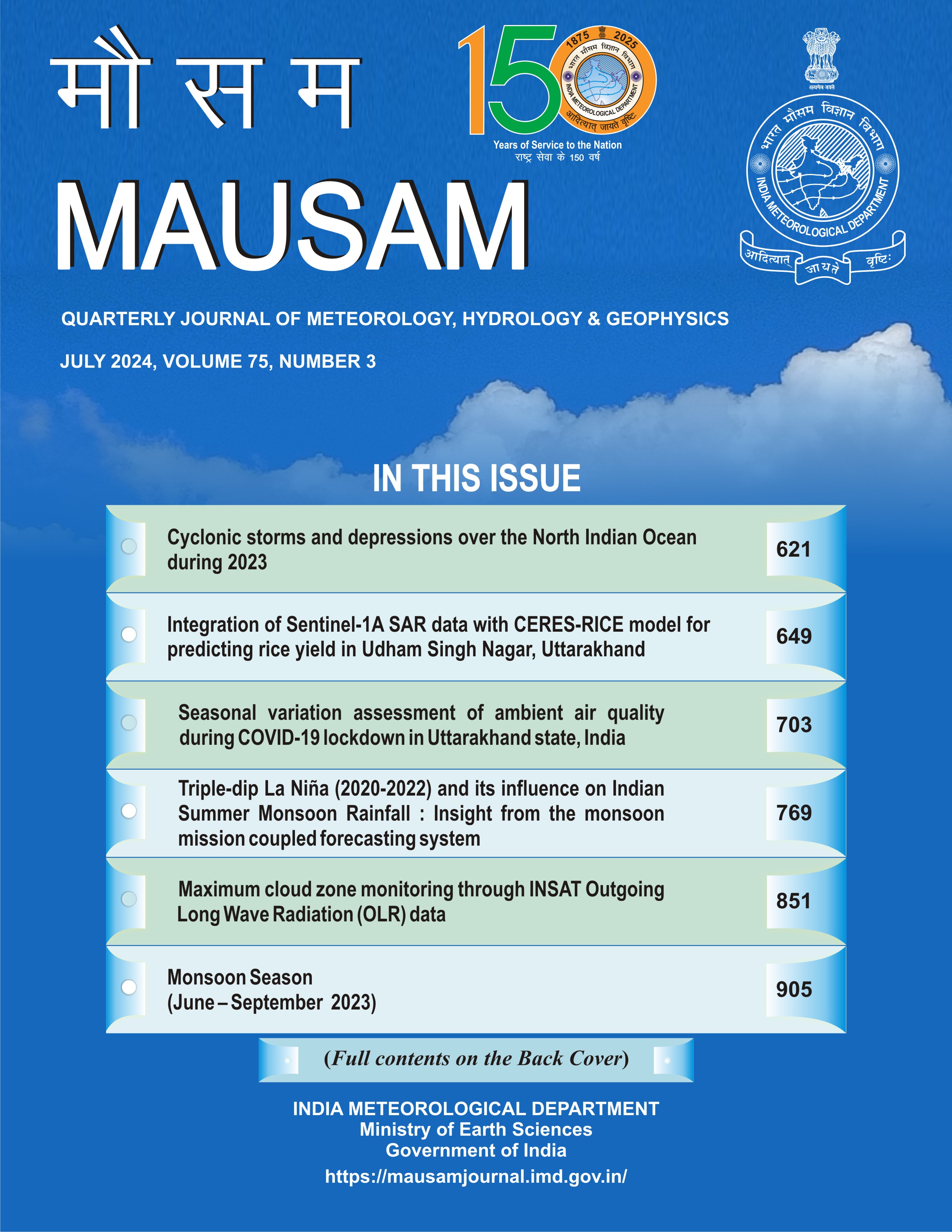Integration of Sentinel-1A SAR data with crop simulation model for rice yield prediction in Udham Singh Nagar, Uttarakhand
DOI:
https://doi.org/10.54302/mausam.v75i3.5905Abstract
In this study, the utility of assimilation of multi-temporal and multi-polarized Sentinel-1A SAR (Synthetic Aperture Radar) data with rice crop model for mapping and predicting rice yield for district Udham Singh Nagar, Uttarakhand has been discussed. In this approach information regarding rice distribution over the district was achieved by mapping of rice fields from Sentinel-1A SAR images using support vector classification, and then the CERES RICE model which is embedded in DSSAT-4.7 was re-initialized by performing assimilation method in which the temporal single-polarized rice backscattering coefficients were grouped for each rice pixel for the district. The optimal input parameters with assimilation method in re-initializing the model allows a good temporal agreement between rice backscattering coefficients derived from Sentinel-1A SAR images and the rice backscattering coefficient derived from coupled model i.e. integration of CERES RICE (DSSAT-4.7) and semi-empirical rice backscatter model through Leaf Area Index (LAI). After re-initialization the yield of rice was calculated from each rice pixel and yield map of the area of study was developed. The results showed that the coupled model gave an estimate of rice yield of 3190 kg/ha which was quite near to the five years average district yield which was 3160 kg/ha with a difference of 30 kg/ha between coupled and five years average rice yield of the district y. On the basis of results obtained it can be concluded that Sentinel-1A SAR data has great potential for monitoring and mapping of rice with the ability to predict the yield of rice crop. The prediction of rice crop is an important step that could be used to assist farmers and policy makers by providing in-season estimates of the rice yield and production. This information could be used for better planning of the resources.
Downloads
Published
How to Cite
Issue
Section
License
Copyright (c) 2024 MAUSAM

This work is licensed under a Creative Commons Attribution-NonCommercial 4.0 International License.
All articles published by MAUSAM are licensed under the Creative Commons Attribution 4.0 International License. This permits anyone.
Anyone is free:
- To Share - to copy, distribute and transmit the work
- To Remix - to adapt the work.
Under the following conditions:
- Share - copy and redistribute the material in any medium or format
- Adapt - remix, transform, and build upon the material for any purpose, even
commercially.



